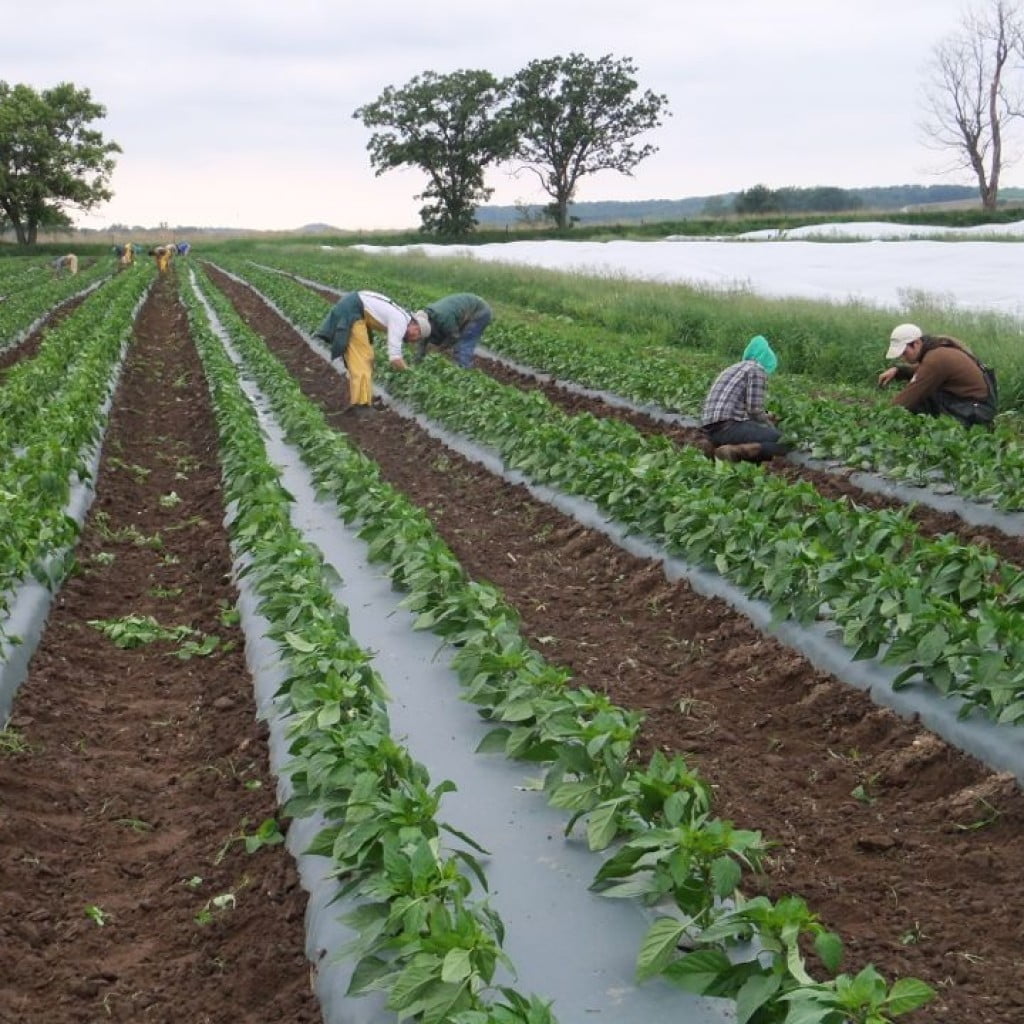Empty greenhouses, full fields
- On: June 11, 2014
 0
0
We finished an intense burst of field work last week. Under threat of coming rain, Steve and the crew rushed to transplant our seedlings into the field. We emptied two full greenhouses, a total of 50,000 plants. Everyone worked so hard. We have reviewed and practiced our hand signals this spring for communication with our tractor drivers. For example, we circle a finger in the air to say “speed up.” Simone looked back from the tractor during pepper transplanting. Clint was planting so quickly with both hands that he couldn’t even manage the hand signal, just a big grin and a nod of the head. Sturdy pepper seedlings can handle that kind of speed. We slow down for melons and cucumbers because their roots are fragile and they need gentle handling. Handle them roughly during transplanting and many plants will die.
Steve reviewed the accomplishments at the end of the week, thanked everyone, and announced “Of course, all of those fields will need weeding in 10 days.” That was a sobering moment. Fortunately, the work goes quickly with a large group of people. I asked Steve why we were able to complete so much in one week. He said it was the cohesive crew, terrific plants, cooperative weather. Personally, I think it was the new t-shirts.
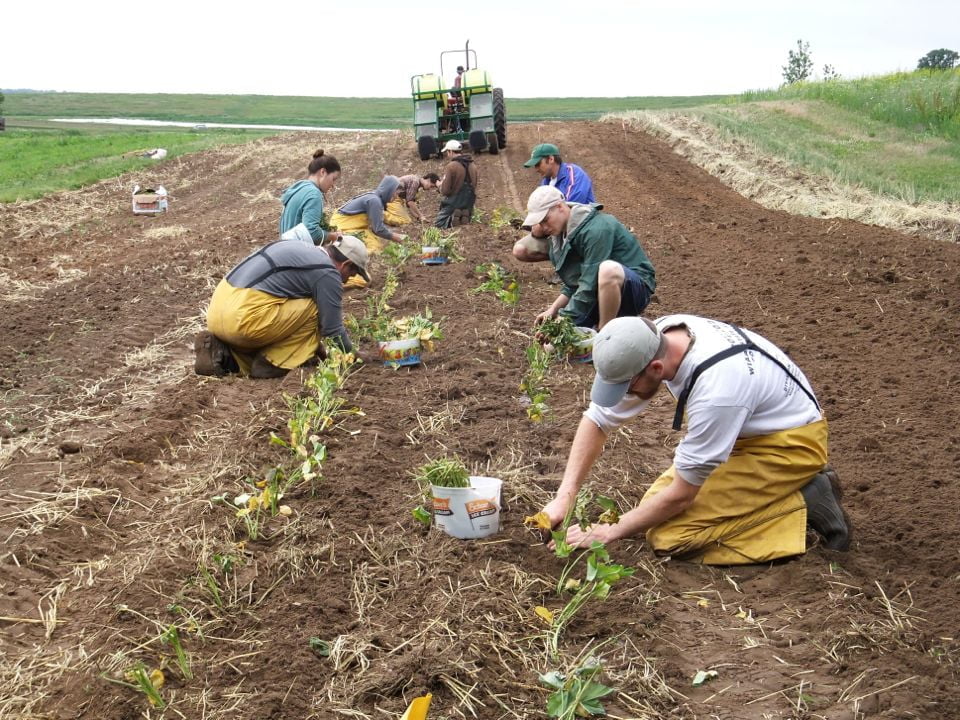
See what we can accomplish as a group? Planting sweet potato slips.
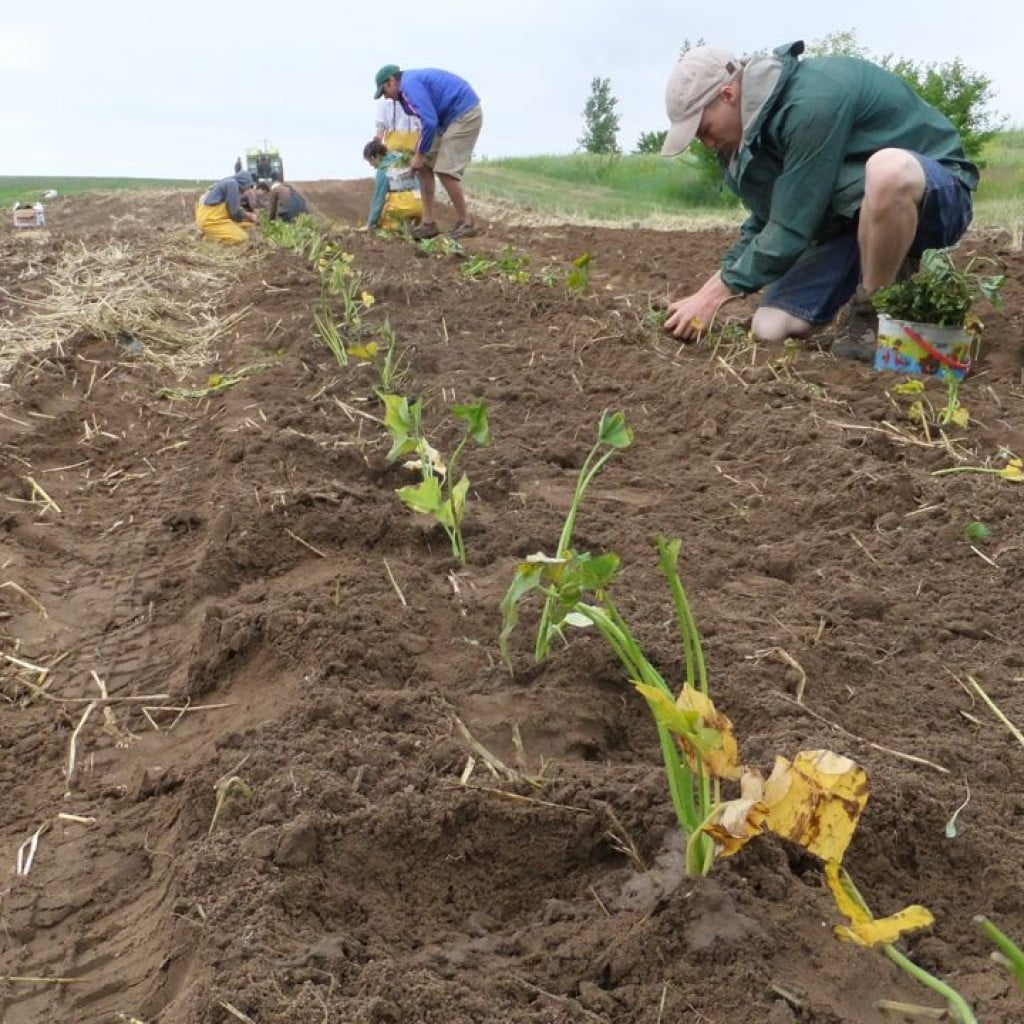
These tiny cuttings will grow into ten foot vines.
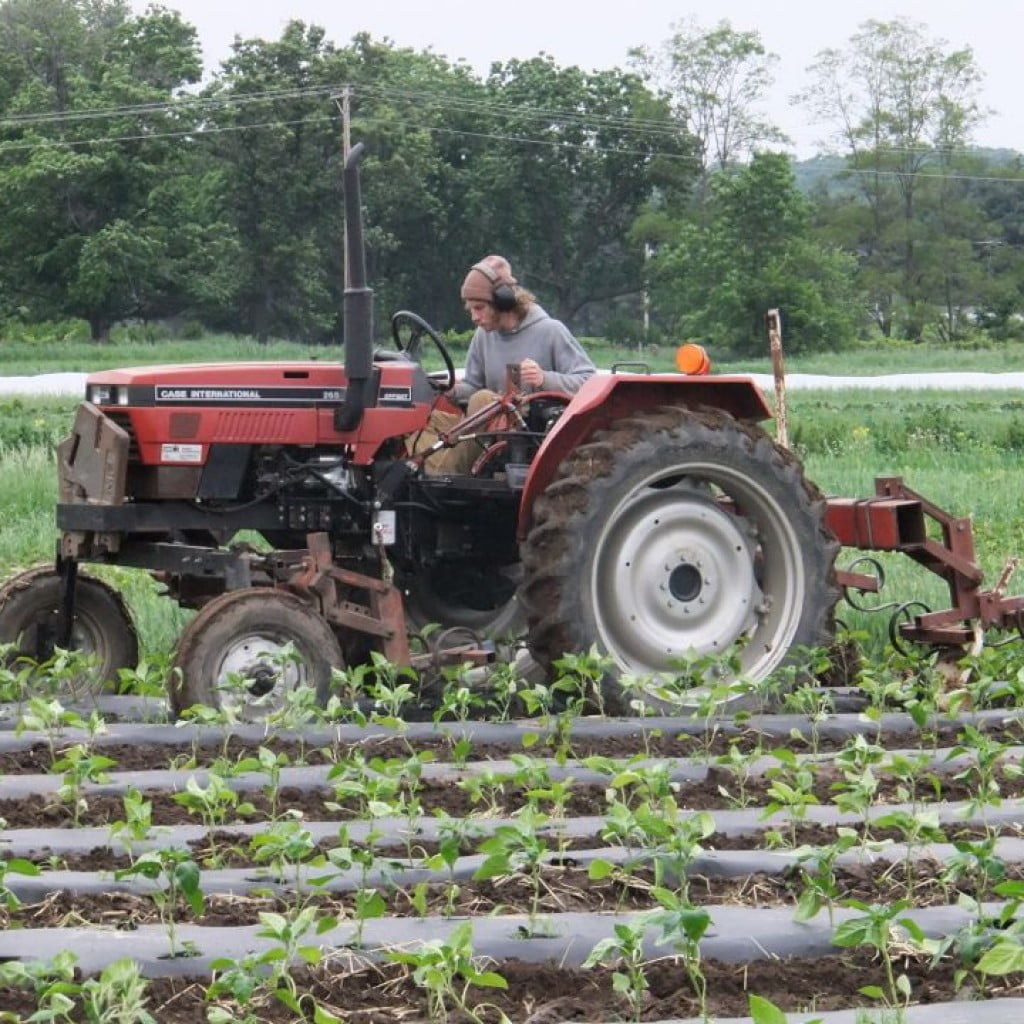
Steve is teaching Michael to cultivate. Here, he cultivates weeds at the edge of plastic mulch in our pepper fields. This job takes great concentration.
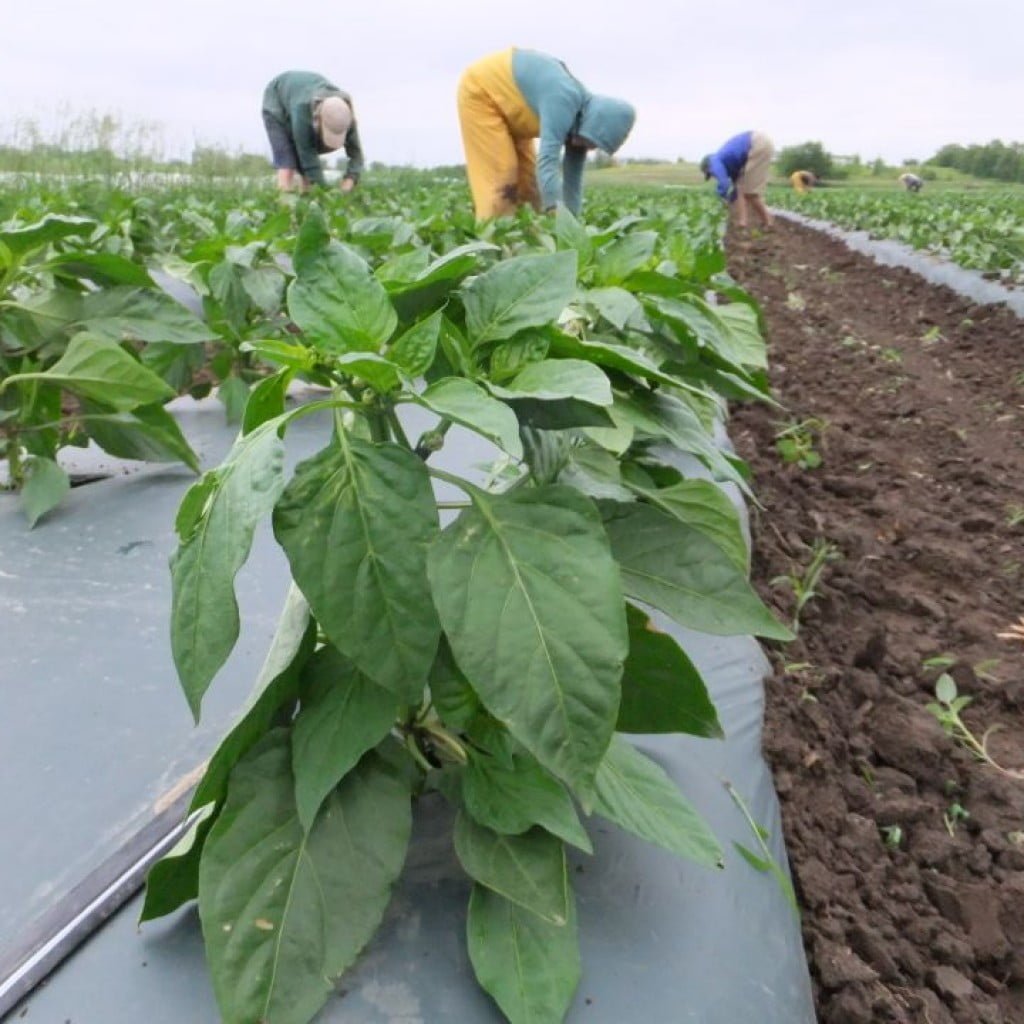
The pepper plants are thriving.
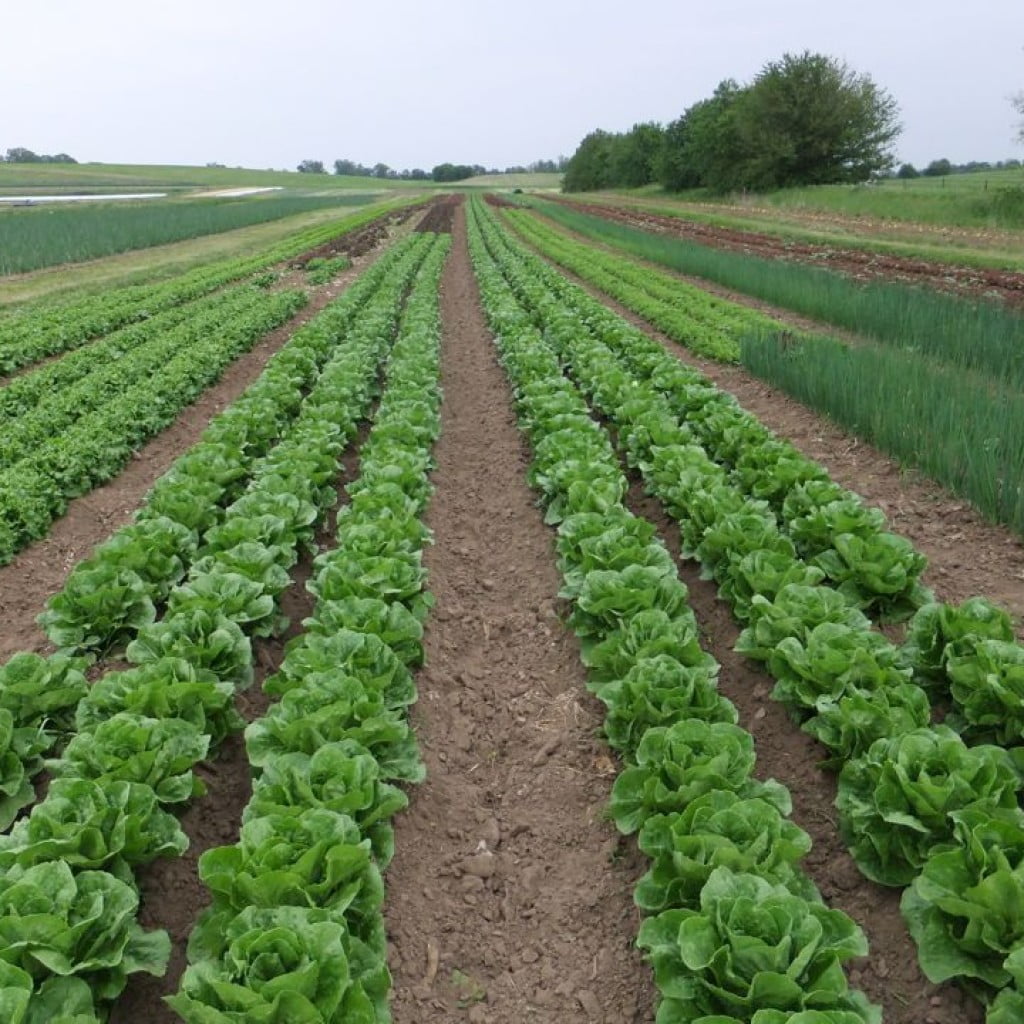
All the colors are so lovely right now. From left, endive, lettuce and scallions, ready to harvest.
A Wrinkle in Local Thyme (LT) registration
Pat wants you to know that each member’s registration will end one year after you first registered. LT has worked for some of you without renewal this year, but will lapse on the anniversary of last year’s registration. Send me an email titled “LT please” if you need the registration instructions and code.
Veggie List and Veggie Notes (6/12/14, week #4, purple EOW)
This is the year of giant spring vegetables. We’ve had great growing weather and everything is big. Quality remains excellent. Again, we encourage you to wash your produce carefully (especially asparagus, lettuce, escarole and spinach) because of the recent rains.
Asparagus, 1.3 lb
Red leaf lettuce, 1 head
Spinach, 1 large bunch, about 1.75 lb
Escarole, 1 head
White salad turnips, 1 bunch
Scallions, 1 bunch
Kohlrabi, 1
A few members will get a small head of broccoli.
Next week’s box will contain PEAS plus a few incidentals like asparagus, chard or kale, lettuce, scallions, garlic scapes, and more.
Escarole (large head of wavy green leaves) – This member of the chicory family can be eaten raw or cooked. Its slightly bitter flavor is a good addition to mixed salads. It is excellent cooked alone or mixed with other greens. It cooks quickly, but not as quickly as spinach. Refrigerate.
Kohlrabi (pale green globe with crisp white interior) – Kolrabi is an unusual vegetable that I enjoy introducing to new CSA members because almost everyone likes it. Crunchy and sweet, it’s a great addition to salads.
Storage: Kohlrabi bulbs will store for a month in the refrigerator.
Uses: Kohlrabi are good peeled and eaten out of hand, or added to sandwiches. It is good mixed into salads, or prepared as a salad on it’s own. You can grate it, slice it, or cut it into matchsticks. It’s also good cooked. If you have it, the Asparagus to Zucchini cookbook has a long list of kohlrabi suggestions.

